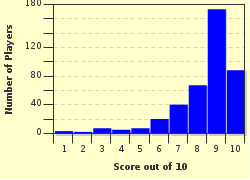Quiz Answer Key and Fun Facts
1. The bowler bowls the ball, it hits the batsman's pads, and the bowler turns to the umpire and screams something that sounds like "Zaaaaart!". What is he actually asking the umpire?
2. The bowler strides up to the wicket to bowl the ball, but his front foot lands in front of the line known as the popping crease as he delivers the ball. What words will you hear the umpire shouting at this point?
3. The batsman hits the ball into the outfield, and considers whether he and his partner have a chance of completing a run before the fielder returns the ball. According to age old custom, what are the only three words that the batsman should choose from to "call" a run?
4. The batsman has seemingly completed two runs (running to one wicket, turning, then running back to the wicket he started from). However, at the completion of his running, the umpire turns to the scorers, making a signal which involves tapping his hand against his shoulder, accompanied by what shout to the scorers?
5. The bowler has just bowled six consecutive legal deliveries, the final one has become "dead" by being gathered safely in the wicketkeeper's gloves, the batsmen have no intention of taking a run. What will you hear the umpire calling at this stage in the proceedings?
6. The bowler bowls, the batsman fends at the ball, it goes through to the wicketkeeper and there is an appeal to the umpire for a catch. What sound has the wicketkeeper heard?
7. It's a Saturday afternoon, and the first innings has been going along for two or three hours. What welcome sound might some of the fielders hear from the pavilion?
8. Whilst walking through the English countryside on a summer's evening, a familiar sound drifts over the gentle breeze to your ears. A game of cricket is taking place. What sound do you hear?
9. Between every ball, you hear a faint "click" coming from the direction of the umpire as he puts something from one hand to the other. What is unlikely to be causing that noise?
10. The bowler bowls the ball, and it passes a good three feet behind the batsman. The umpire turns to the scorers, with both arms extended he shouts what?
Source: Author
huw27
This quiz was reviewed by FunTrivia editor
Nightmare before going online.
Any errors found in FunTrivia content are routinely corrected through our feedback system.

